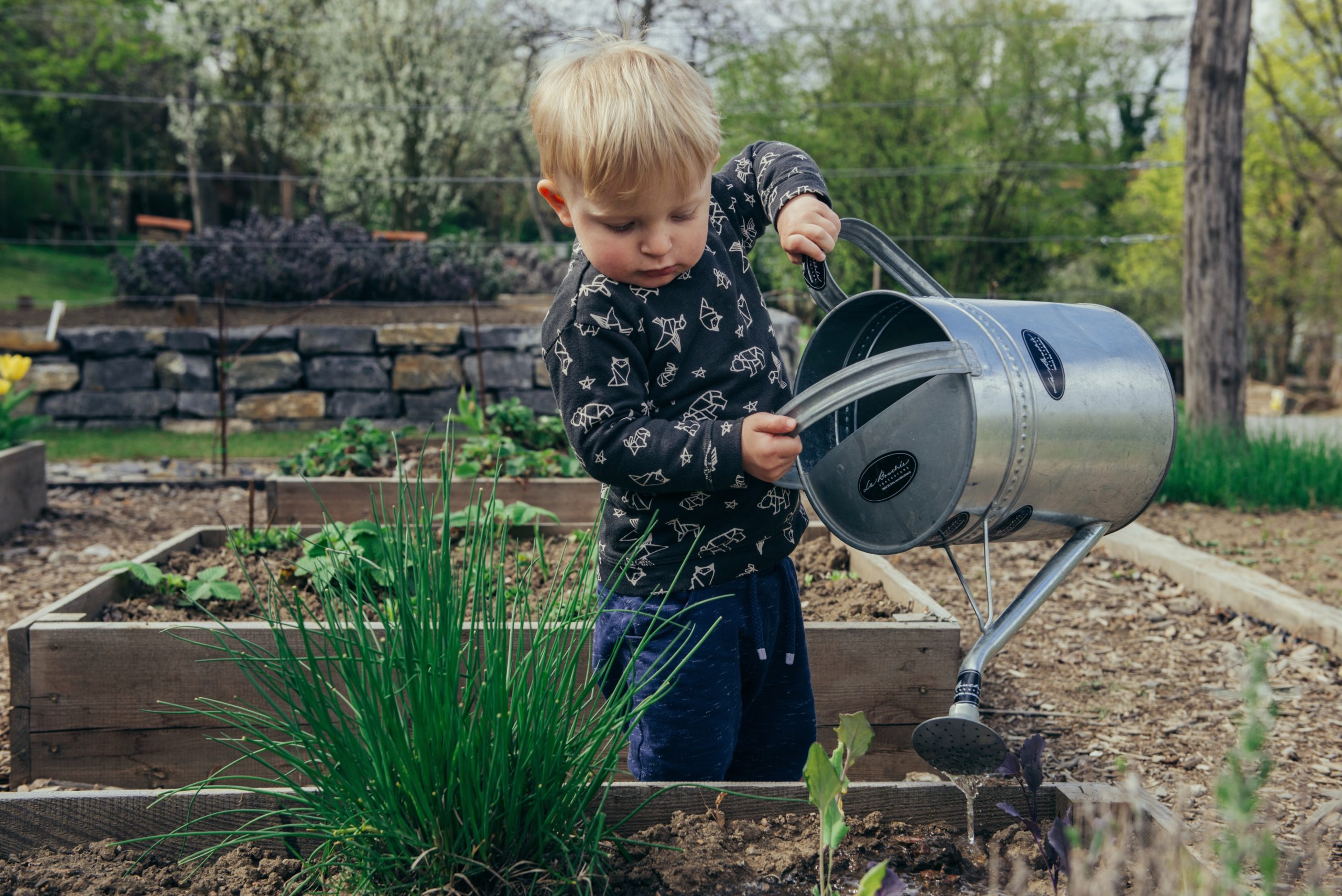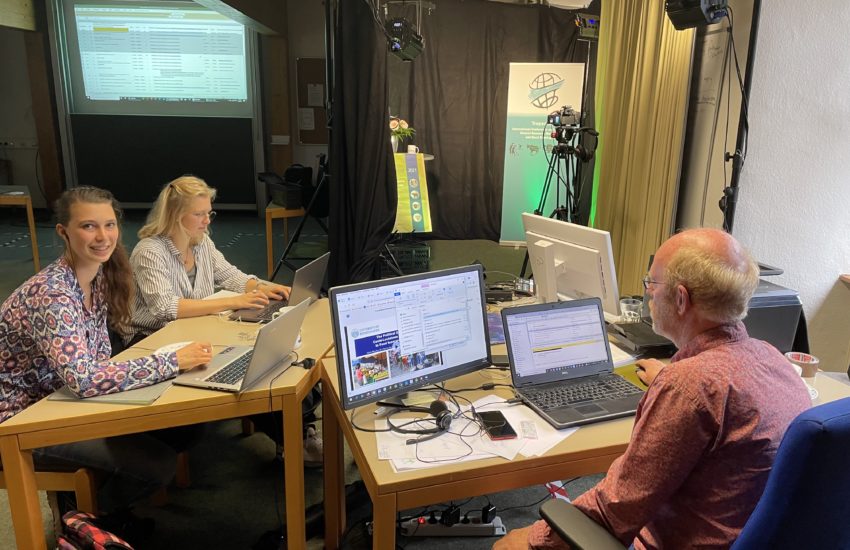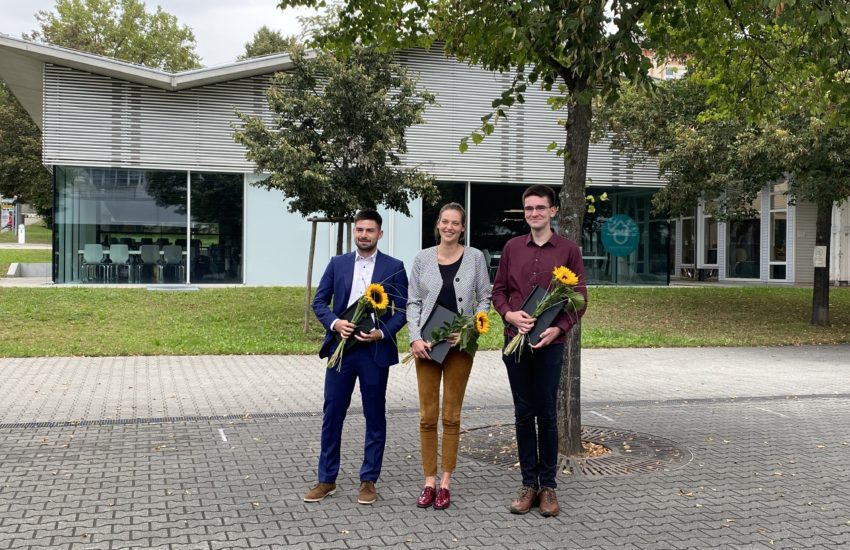The Worldwide Growth of School Gardens: Insights into Switzerland, Ethiopia, Peru, and Myanmar
Schools gardens are one strategy schools across the globe are using to increase nutritional security and appreciation of nature in their students. These gardens help children learn biology and ecology firsthand, and also supply fresh food for school lunches.
The Tropentag student reporter team took the opportunity to interview Margot Dumas about her involvement in the research about school gardening’s impact on nutrition and food safety, civil participation and engagement, and environmental consciousness. She presented “School Gardens for Nutrition and Food Security: Case Study from Switzerland, Ethiopia, Peru and Myanmar” for the Learning – Teaching – Co-Operating poster session under Socio-Economics.
Scientists know too well how Covid-19 has effected every part of the research process, and this work was no exception. Initially, the goal was to work in an NGO program in Casma, Peru, where they developed many school gardens, to develop a tool to assess the impact, strengths, and weaknesses of the program. However, the research team pivoted their focus to four schools across the globe by interviewing 11 experts, interpreting children’s homework about the gardens, and using data analysis tools like MAXQDA and SWOT.
It seems in the media (at least in the West) that school gardens are seeing a rise in popularity. Do you attribute this trend to any specific influences?
This aspect has not been deeply researched in this thesis, but the results showed that all the school gardens were used to develop an interest in discussing environmental issues with the children. So I could deduce, that the general growing interest and awareness for the environment all over the globe could be a good starter point for the great enthusiasm around school gardens. Also in the educational setting, ever more attention is given to giving the children the opportunity to move more, not only at their desk. More modern didactical and pedagogical tools, partly inspired by Steiner-Waldorf or Montessori methodologies are also applied to public schools to promote children’s concentration with new stimulation.
Some critics of school garden programs feel students’ time is best spent in the classroom and not in the garden, especially in areas that have a larger percentage of students underperforming in hard skills like math. Did the implementation of the school gardens in your study face any similar setbacks? For example, an agricultural community that may have felt they do not send their children to school to keep them working in the fields during precious educational time?
I have not been facing such cases. I rather had the experience with an opposite situation in Peru in the Casma region. One of the school gardens working the best is the one which is situated far away from the city where the parents of the children could also give they input and energy and gather the whole village community.
Could you provide some insight into the tools used to decode the children’s drawings?
The idea, was to have access to the impression of the children, through a very authentic material. Not all the children participating to the research were in age to read or write, so they had the choice to express themselves howewer they wanted (drawings, video, audio-record, essay,…).
”This part of the research was inspired by a quote from Calmettes (2008) “Having to draw the observed object leads to the identification of details that had not been given importance because they did not seem to correspond to the questions one was asking oneself”. A child’s drawing can be considered as a representative thought from which it is possible to extract some principles. This technique or method is also widespread in psychology, sociology, and anthropology but is often neglected in other contexts (Lavoie and Joncas 2015). Giving the opportunity to the children to answer in a not strictly academical way, allows researchers to observe a variety of exchanges between the participants and themselves (ibid.). (…) A specific code system for the Children’s homework was developed for MAXQDA (See Appendix 22). Due to the current COVID-19 situation, some of the teachers struggled to reach the children and dis-tribute the homework task. Consequently, not all the homework was turned it, so for some school gardens the children’s data is missing.”
Excerpt from BSc thesis
How were the four countries of study (Switzerland, Ethiopia, Peru and Myanmar) chosen? Did you find unexpected similarities or differences across cultures?
In almost each project the teachers seemed to be very enthusiastic towards new project and activties on the school area. But often, after the realisation phase, it was hard to find and keep motivated person to sustain and mantain the good development of the garden in that case. Most of the project were not assesing the impact the school garden has on children, because of the time consuming process of doing it and they actually do not need this, if the the structure is already well settled.
” The key experts were sampled in a non-random purpose-driven process, based on internet research and certain criteria. They had to be involved in a school garden project that had been established in a public school with children in primary school level. Due to the difficulty to contact different schools and projects, some of the projects ended up involving students at high school level. The key experts were chosen in order to represent school gardens from different continents, they cover Europe, Africa, Latin America and Asia.”
Excerpt from BSc thesis
In 1-2 words, what does Tropentag mean for you?
Experience and Opportunity



